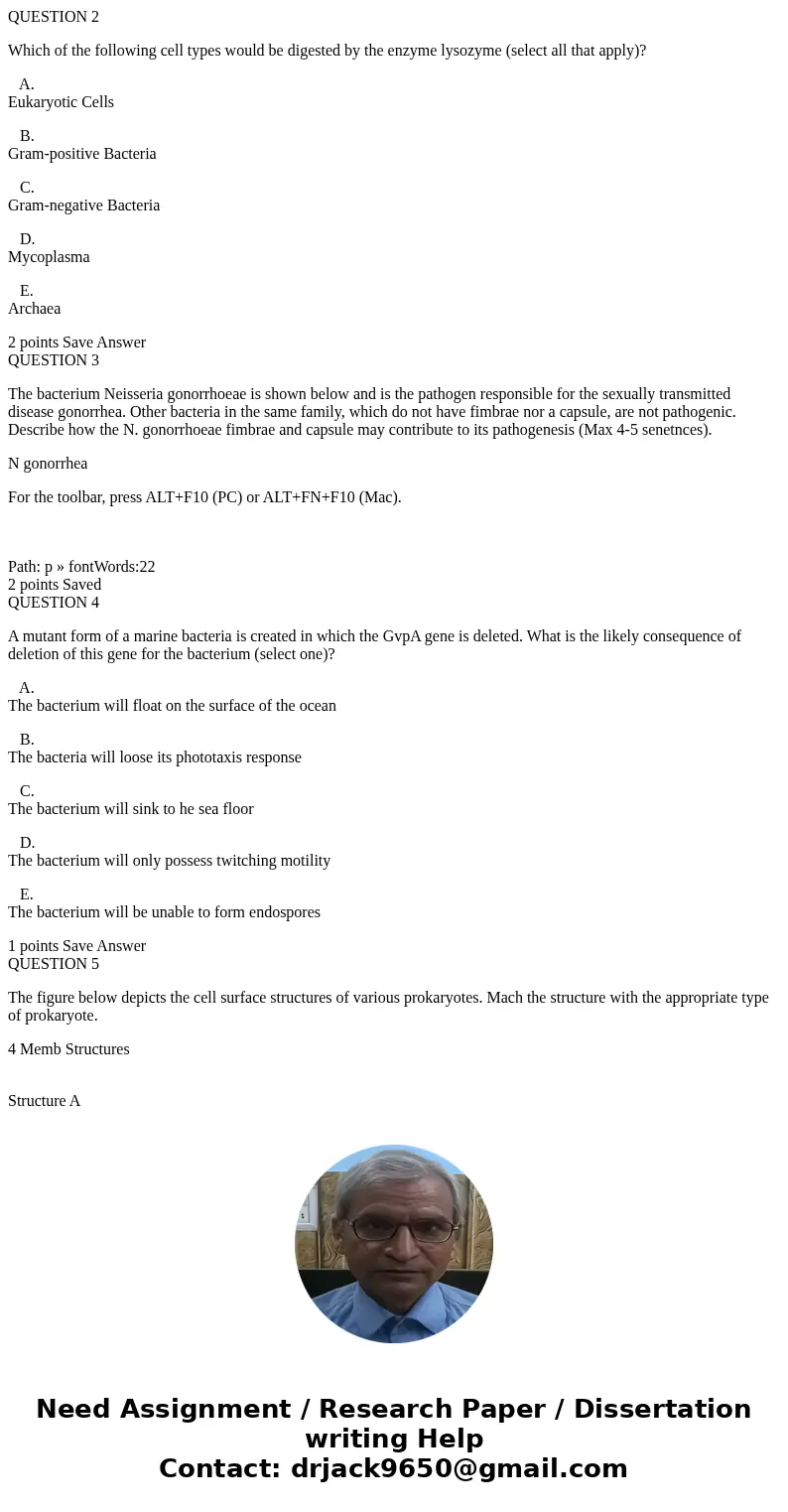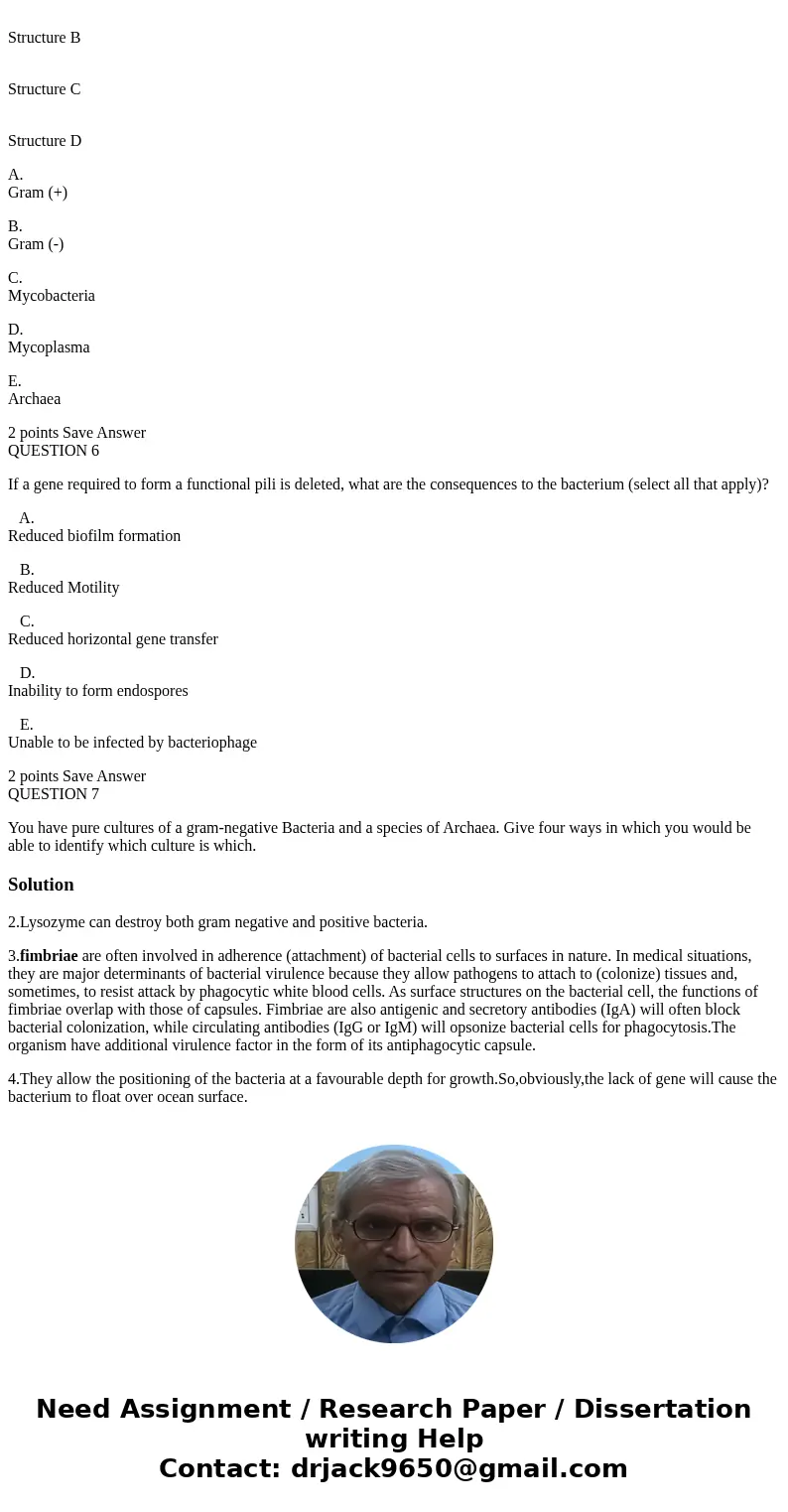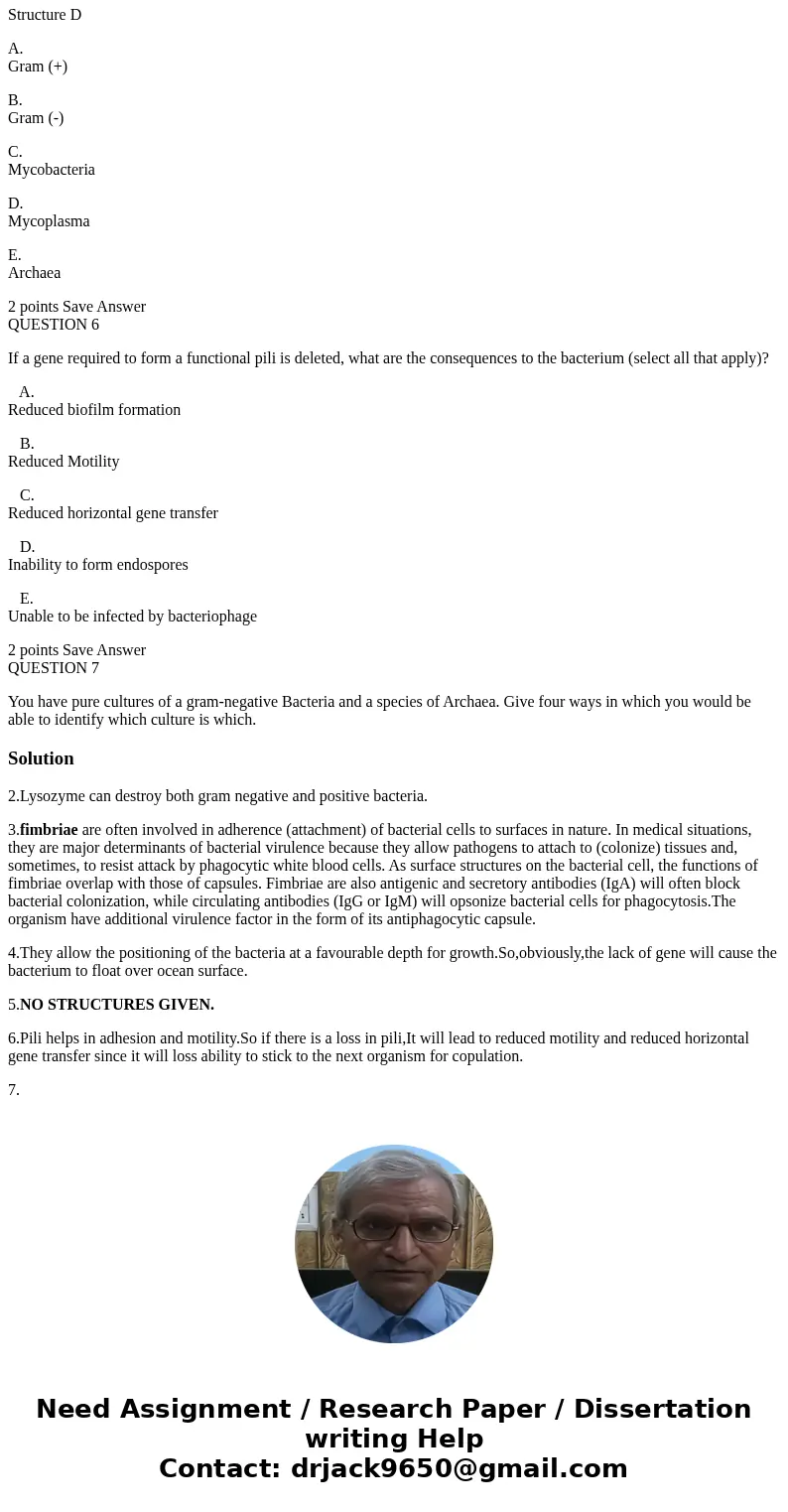QUESTION 2 Which of the following cell types would be digest
QUESTION 2
Which of the following cell types would be digested by the enzyme lysozyme (select all that apply)?
A.
Eukaryotic Cells
B.
Gram-positive Bacteria
C.
Gram-negative Bacteria
D.
Mycoplasma
E.
Archaea
2 points Save Answer
QUESTION 3
The bacterium Neisseria gonorrhoeae is shown below and is the pathogen responsible for the sexually transmitted disease gonorrhea. Other bacteria in the same family, which do not have fimbrae nor a capsule, are not pathogenic. Describe how the N. gonorrhoeae fimbrae and capsule may contribute to its pathogenesis (Max 4-5 senetnces).
N gonorrhea
For the toolbar, press ALT+F10 (PC) or ALT+FN+F10 (Mac).
Path: p » fontWords:22
2 points Saved
QUESTION 4
A mutant form of a marine bacteria is created in which the GvpA gene is deleted. What is the likely consequence of deletion of this gene for the bacterium (select one)?
A.
The bacterium will float on the surface of the ocean
B.
The bacteria will loose its phototaxis response
C.
The bacterium will sink to he sea floor
D.
The bacterium will only possess twitching motility
E.
The bacterium will be unable to form endospores
1 points Save Answer
QUESTION 5
The figure below depicts the cell surface structures of various prokaryotes. Mach the structure with the appropriate type of prokaryote.
4 Memb Structures
Structure A
Structure B
Structure C
Structure D
A.
Gram (+)
B.
Gram (-)
C.
Mycobacteria
D.
Mycoplasma
E.
Archaea
2 points Save Answer
QUESTION 6
If a gene required to form a functional pili is deleted, what are the consequences to the bacterium (select all that apply)?
A.
Reduced biofilm formation
B.
Reduced Motility
C.
Reduced horizontal gene transfer
D.
Inability to form endospores
E.
Unable to be infected by bacteriophage
2 points Save Answer
QUESTION 7
You have pure cultures of a gram-negative Bacteria and a species of Archaea. Give four ways in which you would be able to identify which culture is which.
Solution
2.Lysozyme can destroy both gram negative and positive bacteria.
3.fimbriae are often involved in adherence (attachment) of bacterial cells to surfaces in nature. In medical situations, they are major determinants of bacterial virulence because they allow pathogens to attach to (colonize) tissues and, sometimes, to resist attack by phagocytic white blood cells. As surface structures on the bacterial cell, the functions of fimbriae overlap with those of capsules. Fimbriae are also antigenic and secretory antibodies (IgA) will often block bacterial colonization, while circulating antibodies (IgG or IgM) will opsonize bacterial cells for phagocytosis.The organism have additional virulence factor in the form of its antiphagocytic capsule.
4.They allow the positioning of the bacteria at a favourable depth for growth.So,obviously,the lack of gene will cause the bacterium to float over ocean surface.
5.NO STRUCTURES GIVEN.
6.Pili helps in adhesion and motility.So if there is a loss in pili,It will lead to reduced motility and reduced horizontal gene transfer since it will loss ability to stick to the next organism for copulation.
7.



 Homework Sourse
Homework Sourse